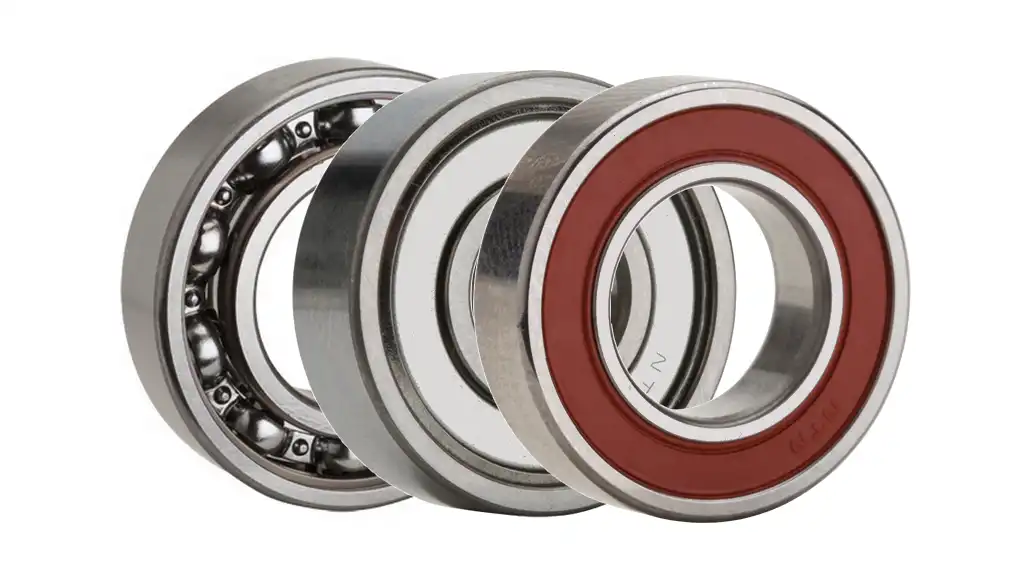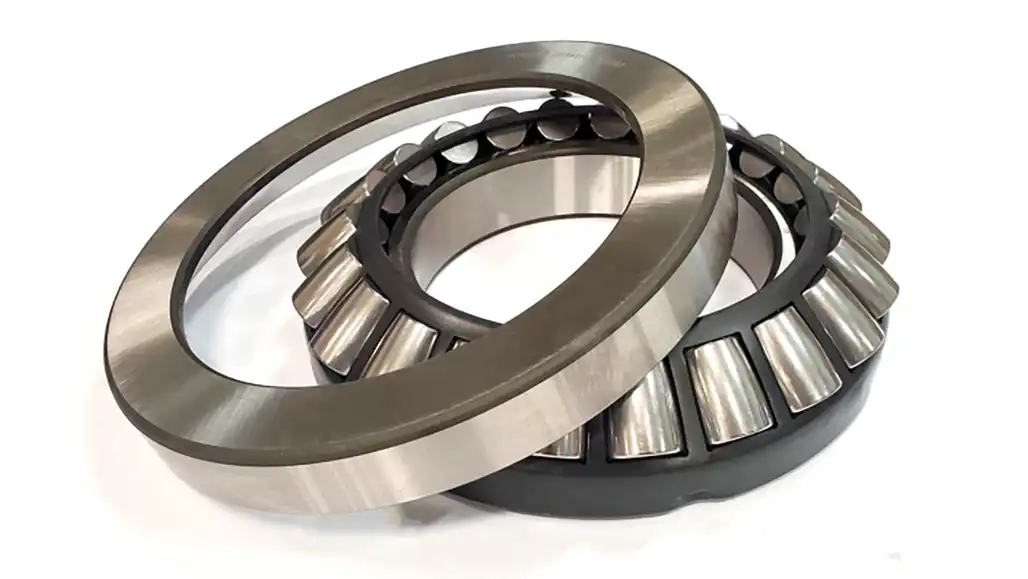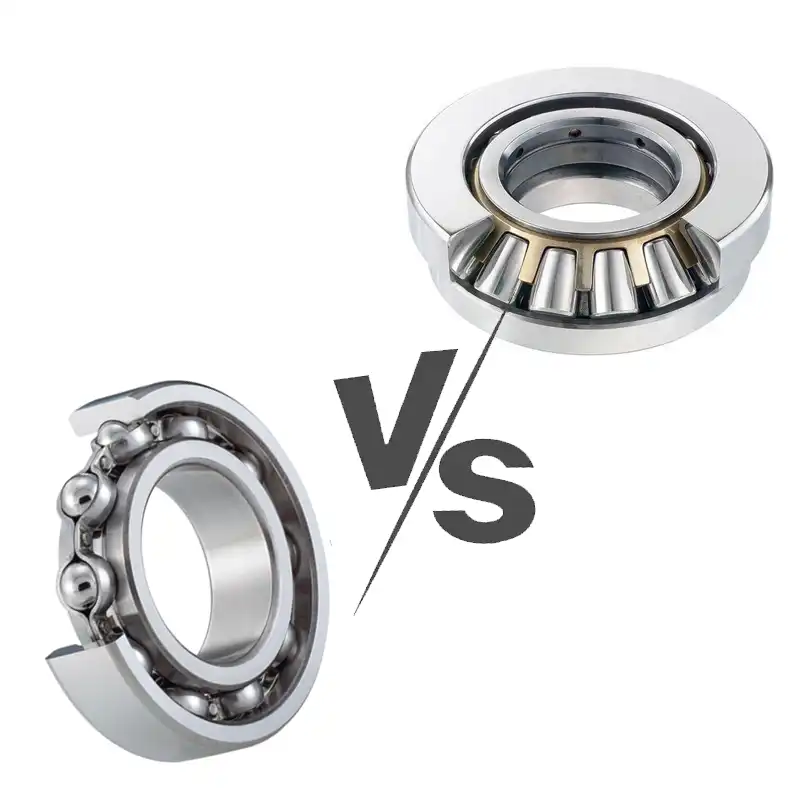In the intricate world of machinery, where every component plays a crucial role, bearings stand out as unsung heroes. These small, seemingly simple devices facilitate smooth movement, reduce friction, and enable machines to function seamlessly.
In this article, we’ll delve into the comparison between radial bearings and thrust bearings, shedding light on their unique features, applications, and the factors influencing their selection.
What Are Radial Bearings

Radial bearings, also known as deep groove bearings or radial ball bearings, are a type of rolling-element bearing designed to support loads perpendicular to the axis of rotation, known as radial loads.
These bearings consist of an inner ring, an outer ring, a set of balls, and often a cage to separate and guide the balls. The inner and outer rings are usually made of steel or other metals, while the balls can be made of steel, ceramic, or other materials.
The primary function of radial bearings is to facilitate smooth rotation by reducing friction between the moving parts. When radial loads are applied, the balls distribute the load evenly across the rings, allowing the bearing to handle radial forces. The design of radial bearings makes them well-suited for applications where the primary load is applied perpendicular to the axis of rotation, such as in electric motors, conveyor systems, and many other machinery and automotive components.
Radial bearings come in various configurations, including single-row and double-row designs. Single-row radial bearings consist of one set of balls and one row of races, while double-row bearings have two sets of balls and two rows of races, providing higher load-carrying capacity.
It’s essential to choose the right type and size of radial bearing based on the specific application requirements to ensure optimal performance and longevity. Additionally, proper lubrication and maintenance are crucial for the efficient operation of radial bearings.
What Are Thrust Bearings

Thrust bearings are a type of rolling-element bearing designed to handle axial (thrust) loads, which occur parallel to the axis of rotation. Unlike radial bearings that support radial loads (perpendicular to the axis), thrust bearings are specifically engineered to handle forces along the axis of rotation.
There are different types of thrust bearings, and they can be broadly categorized into two main types:
- Ball Thrust Bearings: These bearings utilize balls as the rolling elements to accommodate axial loads. Ball thrust bearings consist of two washers (one for the shaft and one for the housing) and a set of balls. The balls are sandwiched between the two washers, allowing them to move smoothly and distribute the axial load.
- Roller Thrust Bearings: Roller thrust bearings use cylindrical or tapered rollers instead of balls. Similar to ball thrust bearings, roller thrust bearings have two washers and the rollers sandwiched between them. The shape and arrangement of the rollers determine the capacity to handle axial loads.
Thrust bearings are commonly found in applications where there is a need to support axial loads, such as in automotive transmissions, axial fans, screw jacks, and certain machine tools. It’s important to choose the appropriate type and size of thrust bearing based on the magnitude and direction of the applied axial load, as well as other specific application requirements. Proper lubrication and maintenance are also essential for the efficient functioning and longevity of thrust bearings.
Differences Between Radial vs Thrust Bearings
Here’s a table summarizing the key differences between Radial Bearings and Thrust Bearings:
| Characteristic | Radial Bearings | Thrust Bearings |
|---|---|---|
| Load Direction | Radial loads (perpendicular to the axis) | Axial (thrust) loads (parallel to the axis) |
| Construction | Inner ring, outer ring, balls/rollers, cage | Two washers, balls/rollers between them |
| Types | Deep groove ball, cylindrical roller, etc. | Ball thrust, roller thrust, etc. |
| Load Capacity | Primarily radial loads; some axial capacity | Primarily axial loads; limited radial capacity |
| Application | Wheels, electric motors, conveyor systems | Automotive transmissions, screw jacks, thrust fans |
| Force Handling | Handles radial forces effectively | Handles axial (thrust) forces effectively |
| Direction of Forces | Perpendicular to the axis | Parallel to the axis |
| Examples | Deep groove ball bearings in wheels, | Ball thrust bearings in automotive transmissions, |
| cylindrical roller bearings in electric motors | roller thrust bearings in screw jacks |
This table provides a quick overview of the main distinctions between radial bearings and thrust bearings based on various characteristics.
Radial bearings and thrust bearings are two distinct types of bearings designed to handle different types of loads and forces. Here are the key differences between radial and thrust bearings:
Load Direction:
- Radial Bearings: Designed to support radial loads, which are forces applied perpendicular to the axis of rotation. Examples include the weight of a shaft or a radial force due to rotational motion.
- Thrust Bearings: Designed to support axial (thrust) loads, which are forces applied parallel to the axis of rotation. Thrust bearings are used to handle forces like those experienced in pushing or pulling applications.
Construction:
- Radial Bearings: Typically consist of an inner ring, an outer ring, balls (or rollers), and sometimes a cage to separate and guide the rolling elements. These elements are arranged to handle radial loads effectively.
- Thrust Bearings: Have two washers (one for the shaft and one for the housing) and rolling elements (balls or rollers) sandwiched between them. The rolling elements are designed to handle axial loads.
Types:
- Radial Bearings: Include various types such as deep groove ball bearings, cylindrical roller bearings, and spherical roller bearings, among others.
- Thrust Bearings: Include ball thrust bearings and roller thrust bearings. The specific type depends on the design and arrangement of the rolling elements.
Load Capacity:
- Radial Bearings: Primarily designed to handle radial loads, but some types can also accommodate certain axial loads.
- Thrust Bearings: Specifically designed to handle axial loads and are optimized for such applications. They may not be as effective in handling radial loads.
Application:
- Radial Bearings: Commonly used in applications where the primary load is perpendicular to the axis of rotation, such as in wheels, electric motors, and conveyor systems.
- Thrust Bearings: Applied in situations where axial loads need to be supported, such as in automotive transmissions, screw jacks, and thrust fans.
Radial bearings are suitable for handling loads perpendicular to the axis, while thrust bearings are designed to handle axial loads along the axis of rotation. The choice between them depends on the specific requirements of the application and the type of loads involved.
Conclusion
In conclusion, the choice between radial and thrust bearings depends on the specific requirements of the application. Understanding the differences, considering influencing factors, and staying abreast of technological advancements are key to making informed decisions for optimal machinery performance.
FAQs
- What is the main function of a radial bearing?
- Radial bearings support radial loads, facilitating smooth rotation in machinery.
- Can a thrust bearing handle radial loads?
- Thrust bearings are optimized for axial loads and may not be suitable for handling radial loads efficiently.
- How often should bearings be lubricated?
- Regular lubrication is essential; the frequency depends on factors like load, speed, and environmental conditions.
- Are there environmentally friendly bearing options?
- Yes, advancements in bearing materials include environmentally friendly options, contributing to sustainable practices.
- What industries benefit the most from advanced bearing technology?
- Industries like aerospace, automotive, and manufacturing benefit significantly from the advancements in bearing technology.

